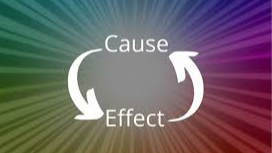
An alternative to the traditional corporate patriarchal model, which typically prioritizes hierarchical, profit-centered decision-making, would be the cooperative model or worker-owned cooperative. This model emphasizes shared ownership, egalitarian decision-making, and community-based values rather than centralized authority and top-down governance.
Key aspects of the cooperative model include:
- Collective Ownership: Employees, rather than outside shareholders or investors, own the company, and profits are distributed among them. This shifts focus from external profit maximization to employee welfare and collective success.
- Democratic Decision-Making: Cooperatives operate on democratic principles, with each member (employee) having an equal vote in major company decisions. This contrasts with traditional models where decisions are often made by a board of directors or upper management.
- Social and Environmental Responsibility: Many cooperatives are mission-driven, integrating social and environmental goals alongside financial objectives. This fosters a more holistic approach, often aligned with long-term sustainability and community engagement.
- Flat Hierarchies: With reduced hierarchical layers, cooperatives encourage transparency and open communication, often fostering a more collaborative and respectful work environment where employees have greater input and agency.
Examples of Companies Using Alternative Structures
- Mondragon Corporation: Based in Spain, Mondragon is one of the largest and most successful cooperatives in the world, with a diverse portfolio of businesses. Employees are both the owners and managers, allowing for collective profit-sharing and community-focused initiatives.
- Patagonia’s Benefit Corporation Status: While not a cooperative, Patagonia operates as a benefit corporation (or B Corp), meaning it is legally obligated to consider the impact of its decisions on workers, customers, suppliers, community, and the environment. This legal framework allows the company to prioritize social and environmental impact over short-term shareholder profits.
- REI (Recreational Equipment, Inc.): A consumer cooperative in the U.S., REI operates by sharing profits with its members, who are also its customers. This model enhances customer loyalty and aligns the business goals with its members’ interests rather than solely shareholder returns.
These alternative models demonstrate how businesses can thrive by aligning more closely with humanistic and egalitarian principles, building community loyalty, and enhancing sustainability while fostering a less hierarchical, more participatory culture.
Helping Executive Women Reduce Stress, Prevent Fatigue & Avoid Burnout
📩 Follow me for more insights or send me a message to connect!









